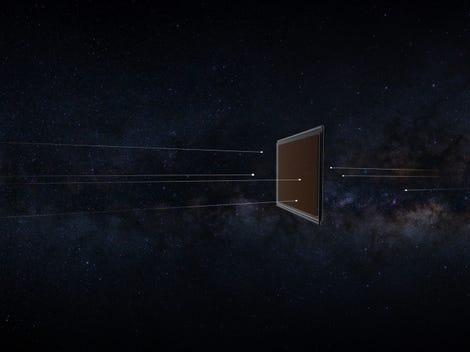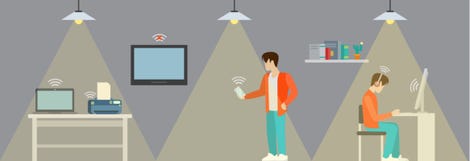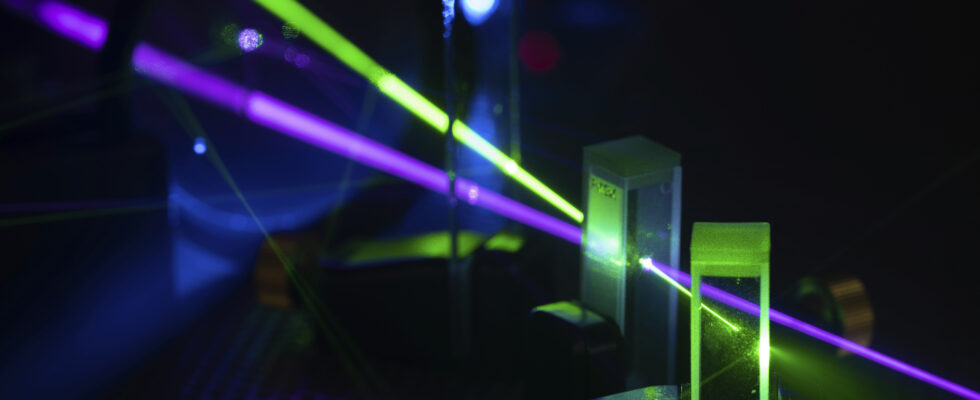Amid gadgets, the Consumer Electronics Show (CES) 2024 is also a place for innovators who want to demonstrate how photonics will reshape the way we use technology.
Photonics, which is the science of generating, manipulating and detecting light, is steering the electronics industry toward a more efficient, faster and more sustainable future. And there is no doubt that the impact of photonics will be profound and multiple, affecting everything from energy consumption to data transmission.
Two leading innovators in this field, Ambient Photonics and Slux, have demonstrated that light can be more than just a lighting tool and can be the backbone of our technological future.
Understanding the impact of photonics
Photonics involves using photons (particles of light) to perform functions for which electrons are typically used in standard electronics. This shift from electrons to photons is revolutionary, enabling improved data transmission speeds and energy efficiency
In an era where energy conservation and efficient communications are paramount, photonics presents an advancement that offers solutions that traditional electronic technologies cannot match.
Ambient Photonics: power and efficiency

The principles of a bifacial cell from Ambient Photonics. Ambient Photonics
Ambient Photonics’ innovations stand out at CES 2024, notably with a new type of solar technology that changes the power of our devices.
Solar cells specially manufactured for indoor use in low light are transforming the way devices are supplied with energy. Enough to move towards an energy-efficient future for our electronic devices.
Traditional solar cells, primarily made of silicon, have long been a key part of solar technology. However, these cells have major drawbacks. They only work in direct sunlight, lose a lot of energy as heat, and can only absorb certain types of light. Additionally, these cells are rigid and bulky, meaning they are primarily used outdoors.
Ambient Photonics has addressed these issues directly, redesigning solar cells for everyday indoor use.
Dye-Sensitized Solar Cells (DSSC) are at the heart of Ambient’s technology. These cells use a special dye to absorb light and create energy. This unique approach allows cells to capture a wider range of light, including low-energy light that escapes ordinary cells. This approach means the cells work well even in low light, such as indoors under normal lighting, making them much more versatile and effective in different environments.
By allowing devices to use even the dim light inside our homes, the company offers a solution to the environmental problems caused by batteries. And the company’s technology doesn’t just extend battery life: it could lead to a future where we don’t need batteries anymore, or just smaller batteries.
Ambient’s solar cells are also designed to be different from traditional cells. They are thin, flexible and can be placed on almost any surface or material. This capability opens up exciting prospects for powering all kinds of products, from remote controls to sensors to wearable technologies.
Slux and the Li-Fi revolution

How Slux’s Li-Fi implementation works. Slux
Swiss startup Slux is at the forefront of Li-Fi, a technology that uses light to send data. Unlike Wi-Fi, which uses the crowded radio frequency spectrum, Li-Fi is faster and more secure.
Slux’s technology allows data to be sent at incredible speeds, much faster than we are used to with traditional Wi-Fi. And because the technology uses light, it is naturally safer. Light can’t pass through walls, so your data stays where it belongs. Additionally, Slux has found a way around the usual problem of needing a clear path for light. Using light reflection allows signals to continue to flow, even around corners, making this technology more useful and flexible than ever before.
But Slux Li-Fi is not just an idea. This is a concrete solution with multiple uses.
- In busy citiesSlux Li-Fi can use streetlights to create a high-speed internet network, avoiding the congestion that occurs with ordinary radio signals.
- In factories and warehousestechnology can help machines and sensors communicate with each other more efficiently and safely, even when there is a lot of other electronic noise.
- For underwater taskswhere ordinary signals can’t go, Slux Li-Fi can improve the way we send data for applications such as ocean research.
- In air transportthis technology can allow passengers to benefit from fast access to the internet without disrupting the aircraft’s equipment.
- In the hospitalLi-Fi technology can help secure patient information while allowing doctors to communicate and help patients in real time.
Slux is changing the game with its Li-Fi technology, which provides a faster, safer and more versatile way to communicate using light. This development isn’t just good news for home internet speeds, it’s potentially a giant leap for every industry and activity, from the depths of the ocean to the sky and into our systems. health.
Market impact and future prospects of photonics
The impact of photonics technologies, such as those demonstrated at CES 2024 by Ambient and Slux, is potentially enormous. For the general public, these changes mean they will have faster access to the internet and more durable devices. For businesses, the use of these new technologies could help reduce costs and limit environmental damage.
Photonics is therefore not just about improving our gadgets. It announces a major change in the functioning of our electronic devices. We are moving towards a future where our devices will be powered by the light around us and send information at incredible speeds.
To go further on photonics
All CES 2024 announcements
Source: “ZDNet.com”
